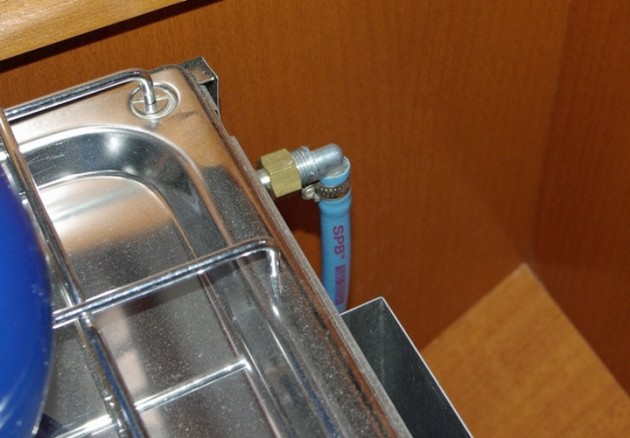On-Board Propane Hose Fittings
If you have a hose-clamped connection to your propane hose at the stove, think about upgrading to a proper end fitting.
July 18, 2014
Question: Here's a picture of the primary feed hose that connects the propane gas to the gimbaled stove on my boat. My concern is that the hose is secured with a stainless steel hose clamp and not a specialized threaded-on fitting.

The hose clamp holding the LPG hose to the stove fitting is probably an old installation. Updated standards require dedicated end-fittings.
This seems wrong to me in light of the pressures involved. The gauge on my LPG bottle indicates in excess of 100 psi at times. Is this a safety problem that needs to be addressed immediately?
Answer: Based on current ISO and ABYC standards that apply to LPG installations, all hoses used in the distribution of LPG are required to have permanently installed end fittings. My interpretation of that requirement precludes the use of a hose clamp to secure the hose to a barbed fitting. That said, on older boats the use of a simple hose clamp to secure these flexible hoses is quite common and in terms of holding back the pressure shouldn’t be a problem.
The connection you are showing is located downstream from the pressure regulator for the system, which is located at the tank. At the stove end the line pressure in the system is actually reduced to approximately 0.5 psi. So, the clamp should work. The problem is that it no longer complies with current international standards based on my understanding of the requirements. I recommend replacing the hose with a rated hose with proper end fittings installed. Make sure the hose itself is labeled properly for use with LPG gas. Typical compliance indicators would be hose that meets the requirements of ISO 2928, Type D or UL 21.












